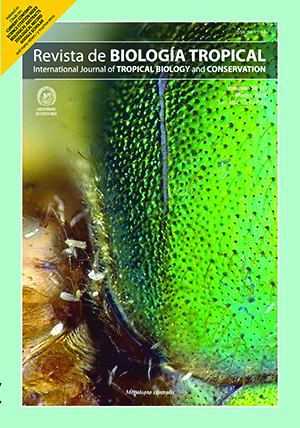Abstract
Studies on fish age and growth are essential to establish models on population dynamics. We determined age and growth of the grunt Haemulon steindachneri from the Southwest Margarita Island using sagita otoliths (direct method) and length frequency (indirect method). A total of 953 individuals were captured by the handcrafted fleet from Boca del Río (Margarita Island) between July 2005 and June 2006. The length-weight relation was established and growth parameters from both curves (length and weight) were estimated using the von Bertalanffy model. The analysis of the annual rings in otoliths established four age groups, and group 3+ was the most representative, with 44.5% of the sample. The calcula-tion of marginal increases of otoliths suggested the development of an annual ring in April, which coincides with the maximum reproduction period. There were no significant differences in the slopes of the curves b(ts=-1.81; p>0.05) and the intercepts a (ts=-1.17; p>0.05) of females and males. Length-weight for both sexes was W=0.0003*L2.89, which indicates an alometric growth pattern. Growth parameters were established as: L∞=231mm, W∞=203g, k=0.569year-1 (direct method) and L∞=228mm, W∞=195g, k=0.580year-1 (indirect method), which suggests that it is a short life species that grows moderately rapidly. The index of growth phi prime (Ø’) coefficient of variation (CV), showed similarity between the growth parameters obtained by both (direct and indirect) methods. The application of the indirect method is recommended, as well as the periodic analysis of population parameters.
##plugins.facebook.comentarios##

This work is licensed under a Creative Commons Attribution 4.0 International License.
Copyright (c) 2010 Revista de Biología Tropical






